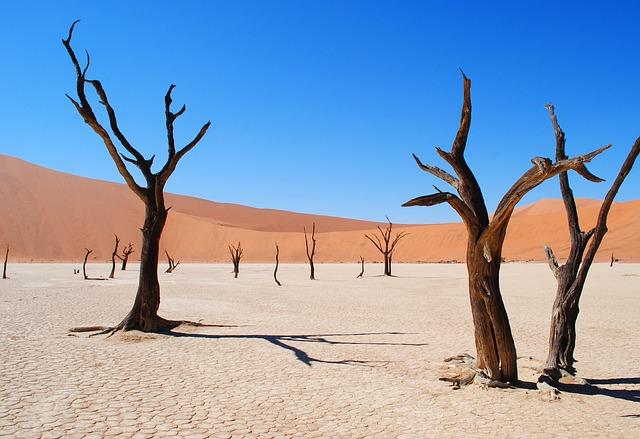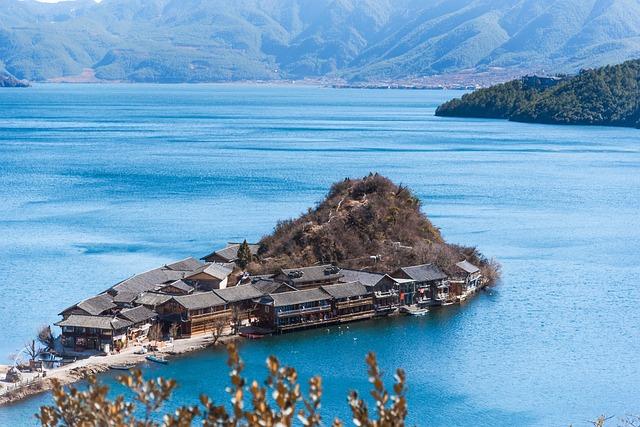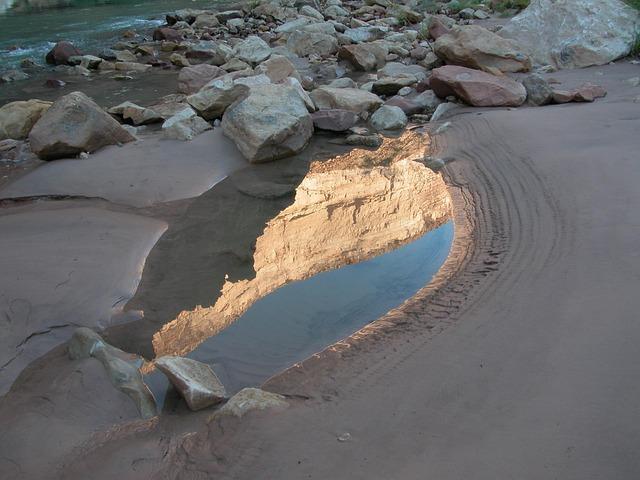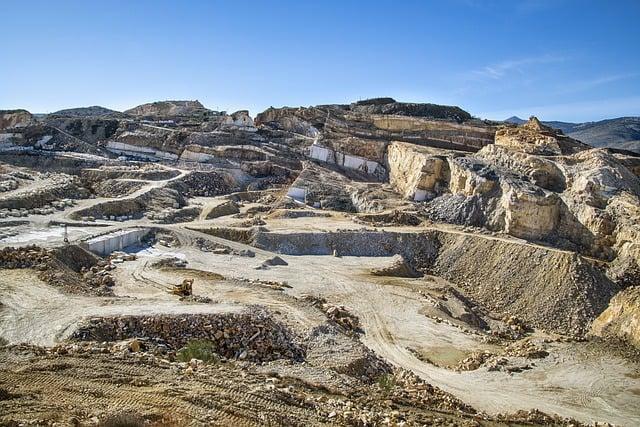Within the huge,arid expanses of Namibia’s deserts,a exceptional revelation is reshaping our working out of human historical past in southern Africa. whilst a lot of African archaeology has historically neglected thes putting landscapes, contemporary clinical developments have unveiled the most important insights into the area’s historical environmental prerequisites.significantly, researchers have pinpointed the timeline of a once-thriving lake that existed inside the Namib Sand Sea, offering important proof of a habitat that fostered early human existence. This text explores the consequences of those findings, highlighting how the interaction between local weather, geography, adn human life is rewriting narratives of survival and adaptation in one of the most global’s cruelest environments. As we delve into the importance of this historical lake, we discover a compelling bankruptcy within the tale of human resilience and the intricate courting between folks and their ecosystems.
Figuring out the historic Importance of Namibia’s Deserts in African Archaeology
Namibia’s deserts, in particular the Namib Sand Sea, are incessantly ample neglected within the broader discourse of African archaeology. On the other hand, contemporary analysis has unveiled vital insights into the area’s historic significance. All through classes of climatic shifts, historical lakes emerged inside the desolate tract, developing important ecosystems that supported quite a lot of types of existence. This period of time is the most important, because it means that prehistoric human populations applied those temporary water our bodies for sustenance and agreement.As scientists delve deeper into the sediment layers and fossil information, they uncover proof of human interplay with those environments, pushing again the timeline of human profession on this arid area.
The results of those findings lengthen past a trifling working out of human migration patterns.They problem long-standing narratives that depict deserts as dead voids within the African panorama. As an alternative, they spotlight the deserts as dynamic environments that experience traditionally performed a pivotal position in shaping human society. Key sides come with:
- Archaeological proof: discoveries of gear and artifacts counsel arranged human task.
- Cultural adaptation: Research point out that historical communities tailored their way of life in keeping with the provision of assets.
- Local weather insights: Palaeoenvironmental analysis finds how climatic adjustments influenced human agreement patterns.

Contemporary Discoveries: The Formation of an Historic Lake within the Namib Sand Sea
Contemporary explorations within the Namib Sand sea have printed compelling proof of an historical lake that after thrived in a area up to now concept too arid to make stronger human existence.Researchers have unearthed mineral deposits, fossilized stays, and historical artifacts, suggesting that this frame of water flourished roughly 5,000 to eight,000 years in the past, throughout a length of higher rainfall. The findings point out that the lake hosted a various ecosystem, providing crucial resources for early human populations. Key options of the invention come with:
- Fossilized Fish Stays: indicative of a thriving aquatic existence.
- Stone Gear: suggesting human task and adaptation methods.
- Geological Proof: Similar to sediment layers that outline the lake’s historic coastline.
The importance of this discovery stretches past mere archaeological passion—it provides profound insights into human adaptation in excessive environments. By means of reconstructing the habitat and prerequisites that supported existence, scientists can higher know how early people interacted with their setting according to climatic adjustments. Additionally, those findings enkindle passion in broader analysis possible throughout Namibia’s desolate landscapes, highlighting the significance of interdisciplinary research in uncovering the intertwined historical past of people and their atmosphere. The desk under summarizes the principle findings:
| Discovering | Importance |
|---|---|
| Fossilized Fish | Proof of numerous aquatic existence. |
| Stone Gear | Indication of human ingenuity and survival. |
| Sediment Layers | geological context of the lake’s life. |

the Position of Lake Sediments in Revealing Previous Human Habitation
Lake sediments function beneficial time drugs, conserving no longer simplest the herbal setting but in addition strains of human task. Within the context of Namibia’s Namib Sand Sea, those sediments have change into essential for working out previous habitation patterns. Geological surveys and core samples taken from the traditional lake beds divulge layers that encapsulate millennia. By means of examining those sediments,researchers can establish carbon relationship proof,natural stays,and anthropogenic artifacts,dropping mild on when early people inhabited the area. Those insights are important for reconstructing historical ecosystems and working out how local weather adjustments impacted human agreement.
Additionally, sediment research supplies a wealth of data in regards to the interactions between early population and their setting. It highlights spaces the place folks would possibly have accumulated for assets,akin to water,and the sorts of natural world they relied upon. Key findings come with:
- Microfossils: Signs of previous biodiversity and ecological prerequisites.
- Carbon Isotope Ratios: willingness and skill of early human communities to conform agricultural practices over the years.
- Chronological Sequencing: Setting up timelines for human migration and agreement correlated with climatic shifts.
Tables showcasing sediment core information additional make stronger the comprehension of those dynamic landscapes:
| Layer Intensity (m) | Age (years BP) | Key Findings |
|---|---|---|
| 0-1 | 0-1000 | Trendy Sedimentation with Artifacts |
| 1-3 | 1000-5000 | Early Farming Proof |
| 3-5 | 5000-10000 | Megalithic Buildings & Animal Bones |
This multidisciplinary method underscores the importance of lake sediments no longer simply as geological proof,however as a wealthy tapestry weaving in combination narratives of historical human existence and adaptation in one in every of Africa’s maximum enigmatic deserts.

Demanding situations and Alternatives in Exploring Namibia’s Wasteland Archaeology
exploring the archaeological possible of Namibia’s deserts items distinct demanding situations that experience incessantly ample hindered students from absolutely working out this distinctive area’s wealthy historical past. One vital hurdle is the cruel environmental prerequisites, characterised via excessive temperatures, aridity, and huge stretches of sand dunes. Those elements complicate fieldwork,making it tough for researchers to behavior excavations and surveys. Moreover, the restricted accessibility of sure websites, blended with logistical demanding situations related to far flung exploration, incessantly ample restricts archaeological efforts. Moreover, the historic overlook of this space in broader African archaeology has created gaps in wisdom, leaving manny historical human actions undocumented.
In spite of those stumbling blocks, contemporary findings referring to an historical lake inside the Namib Sand Sea level to thrilling alternatives for long term analysis. This discovery opens up avenues for working out how early human populations tailored to and thrived inside apparently inhospitable environments. The opportunity of uncovering artifacts and fossils that report the connection between people and the converting local weather is promising. As researchers collaborate with native communities, the revitalization of pursuits in desolate tract archaeology too can foster a better popularity for Namibia’s cultural heritage. Key spaces of prospect come with:
- Technological developments: Using trendy far flung sensing and relationship ways.
- Interdisciplinary collaboration: Enticing ecologists and climatologists to supply complete insights.
- Group involvement: Empowering native populations to take part in archaeological projects.

Suggestions for long term Analysis and Preservation Efforts in Namibia
To verify complete working out and preservation of Namibia’s distinctive archaeological panorama, long term analysis will have to focal point on a number of key spaces: exploration of lesser-known areas inside the Namib Wasteland that can harbor vital archaeological websites; interdisciplinary research that combine geology, anthropology, and local weather science to supply a broader context for working out historical human habitation; and group engagement efforts to contain native populations in analysis projects, making sure that their wisdom and views give a contribution to archaeological narratives.
Moreover,bettering preservation efforts is the most important for shielding those archaeological treasures. Really helpful methods come with the advance of strategic conservation plans that cope with each web site control and area people wishes, making sure that preservation does no longer impede financial building. Setting up a devoted investment frame to make stronger ongoing analysis and conservation projects, at the side of coaching systems for native archaeologists and conservationists, will empower communities to take an lively position in heritage control. Those blended efforts is not going to simplest advance our working out of Namibia’s historical environments but in addition foster sustainable practices that appreciate each historical past and the individuals who inhabit those landscapes lately.

Enticing Native communities within the Archaeological Narrative of Namibia’s Deserts
In recent times, researchers have begun to acknowledge the importance of native communities in shaping the archaeological narrative of namibia’s deserts. Enticing those communities no longer simplest preserves native heritage but in addition enriches the clinical working out of historical existence within the Namib Sand Sea. Collaborative initiatives between archaeologists and group participants have resulted in a extra inclusive technique to uncovering the area’s historical past, acknowledging the experience and cultural wisdom that native folks grasp. By means of fostering those partnerships, scientists can faucet into conventional ecological wisdom, which steadily finds insights that formal clinical analysis would possibly omit.
Moreover, integrating native tales and stories into archaeological analysis can assist elevate consciousness in regards to the significance of conserving Namibia’s deserts.Group-driven projects can come with workshops, guided archaeological excursions, and academic systems that spotlight the relevance of archaeological websites to native identities. This collaboration fosters a way of stewardship and pleasure amongst group participants, encouraging them to offer protection to those beneficial historic assets. Thru those enticing efforts, we construct a wealthy, multidimensional narrative that no longer simplest honors the previous however actively comes to native folks in shaping their very own long term.

The Means Ahead
the rising analysis on Namibia’s deserts finds a wealthy tapestry of human historical past intertwined with the traditional landscapes of the Namib Sand Sea. In spite of historic oversight within the realm of African archaeology, contemporary findings be offering a compelling narrative of a time when an expansive lake fostered human existence on this arid area. As scientists proceed to unearth proof of early human habitation and adaptative methods, it turns into increasingly more transparent that Namibia’s deserts don’t seem to be simply barren wastelands however are, if truth be told, websites of profound archaeological importance. This newfound working out no longer simplest reshapes our belief of Namibia’s previous but in addition underscores the significance of additional exploration in those incessantly enough-overlooked spaces. As researchers delve deeper into the remnants of prehistoric societies, they shine a gentle at the resilience and suppleness of human beings in one in every of Earth’s cruelest environments, inviting us to rethink our narratives in regards to the continent’s historical past and the tales of its folks.
Source link : https://afric.news/2025/02/19/african-archaeology-has-neglected-namibias-deserts-but-scientists-now-know-when-an-ancient-lake-supported-human-life-in-the-namib-sand-sea-the-conversation-africa/
Writer : Victoria Jones
Put up date : 2025-02-19 23:22:00
Copyright for syndicated content material belongs to the connected Source.



